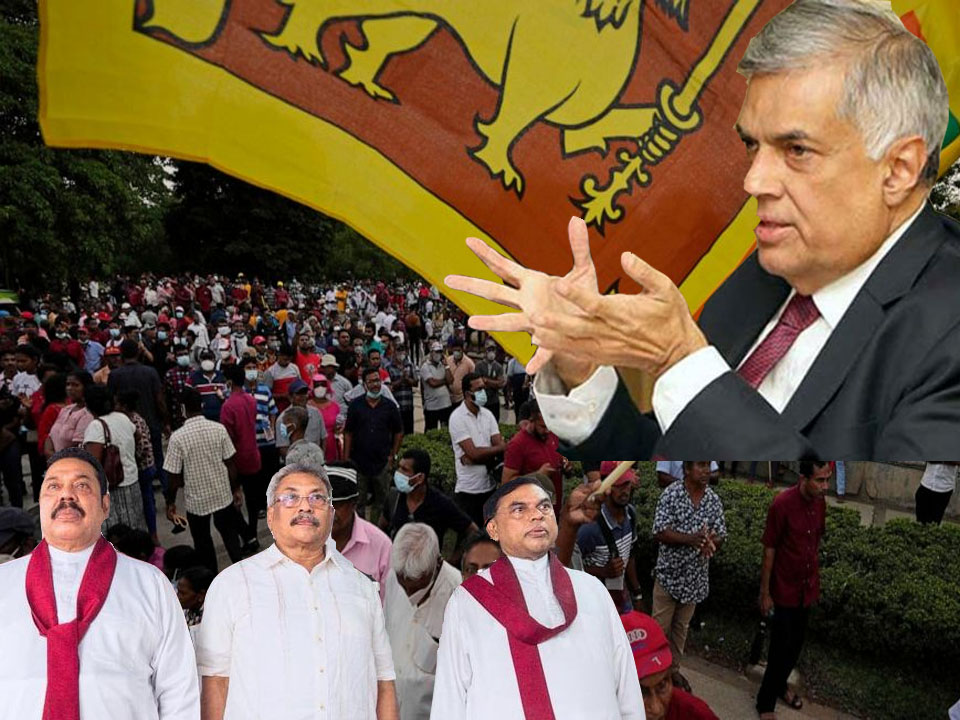After a period of extreme tension and violence, law and order was restored in Sri Lanka on Friday. Calm prevailed as Prime Minister Ranil Wickremesinghe was sworn-in as Acting President and preparations to hold a Presidential election on July 20 began. The masses, who had occupied the official residences and offices of the President and Prime Minister, vacated them upon appeals by civil society leaders. The main irritant, President Gotabaya Rajapaksa, had fled from the country and sent in his resignation by e-mail from Singapore.
But the question that is being asked now is: Will the calm last? Will the administration under Ranil Wickremesinghe, whether temporary or long-term, be accepted by the political and agitators? He has been painted by the latter and the media as a “stooge” of the discredited Rajapaksa clan. Will the fractious politicians in the parliament, sink their petty differences and come together to form an all-party government as demanded by the agitators? Above all, will the government be able to fetch the dollars needed to import essential goods, especially fuel? Will the distribution system be freed from the clutches of hoarders and profiteers? Sri Lankans are keeping their fingers crossed on these questions.
Sri Lanka’s law and order machinery was an idle spectator during much of the violence because no orders came from President Gotabaya Rajapaksa who had lost his nerve. This had encouraged violent elements led by the radical Frontline Socialist Party (FSP) to burn buses and houses of ruling party bigwigs on May 9, and burn the Prime Minister’s residence in Colombo on July 9.
While the events of July 9 forced President Gotabaya to flee from Sri Lanka and submit his resignation from Singapore, the day also brought the curtains down on violence and other unlawful actions. Civil society awoke to the dangers of anarchy. The Catholic and Buddhist clergy, the Bar Association of Sri Lanka, the Ceylon Chamber of Commerce and most of the editorials in the leading dailies called for a stop to violence and a return to constitutionalism.
A group of “Independent” parties issued a statement saying that the violence and political instability could lead to foreign military intervention. The trigger for this fear might have been an unintended consequence of Indian Bharatiya Janata Party MP Dr.Subramanian Swamy’s tweets saying that violence and instability in Sri Lanka would be detrimental to the region and that India should militarily intervene if Colombo requested.
Acting President Wickremesinghe declared that he would not be bamboozled by “fascists” hiding behind the protesters and ordered the law and order machinery to do its duty even using firearms. “I am not against peaceful struggles. However, one needs to identify the difference between insurgents and protesters. It is the insurgents who have taken away the weapons of two policemen and have injured 24 army personnel. We cannot allow it. Unrest will lead to economic turmoil as distribution of essential items such as food, fuel and gas will come to a standstill,” he said.
Addressing the political class, Wickremesinghe said: “I invite all parties to come to an agreement to form an all-party government. It is time to forget the political aspirations of individuals. There should be a country for us to engage in politics. Therefore, I invite all political parties to be a part of the process of rebuilding the nation.”
Parliament is expected to elect a new President on July 20. Wickremesinghe and the Leader of the Opposition Sajith Premadasa are the main candidates. Former Army chief Field Marshal Sarath Fonseka and Janatha Vimmukthi Peramuna leader Anura Dissanayake are others in the fray.
Wickremesinghe is backed by the Sri Lanka Podujana Peramuna (SLPP), the single largest party and is, therefore, the front runner. The US and India are comfortable with him. But the troubling question is: Will the opposition and the agitators outside parliament resume the agitation? Will there not be a resurgence of violence? After all, Wickremesinghe is painted by the opposition and the agitators as a “stooge” of the hated Rajapaksa family. It was the Rajapaksa family which had made him Prime Minister and Acting President.
But Wickremesinghe may not necessarily be a stooge of the Rajapaksas. The history of political successions in Sri Lanka (and other South Asian countries) shows that every leader becomes “his own man” once he sits on the seat of power. To give the most recent example, Wickremesinghe, who brought Maithripala Sirisena to the Sri Lankan Presidency in 2014, thought that President Sirisena would dance to his tune. But Sirisena proved to be Wickremesinghe’s tormentor! Every new leader would strive to build his own hand-picked team of people with little or no links with the past leadership. Wickremesinghe could do just that.





